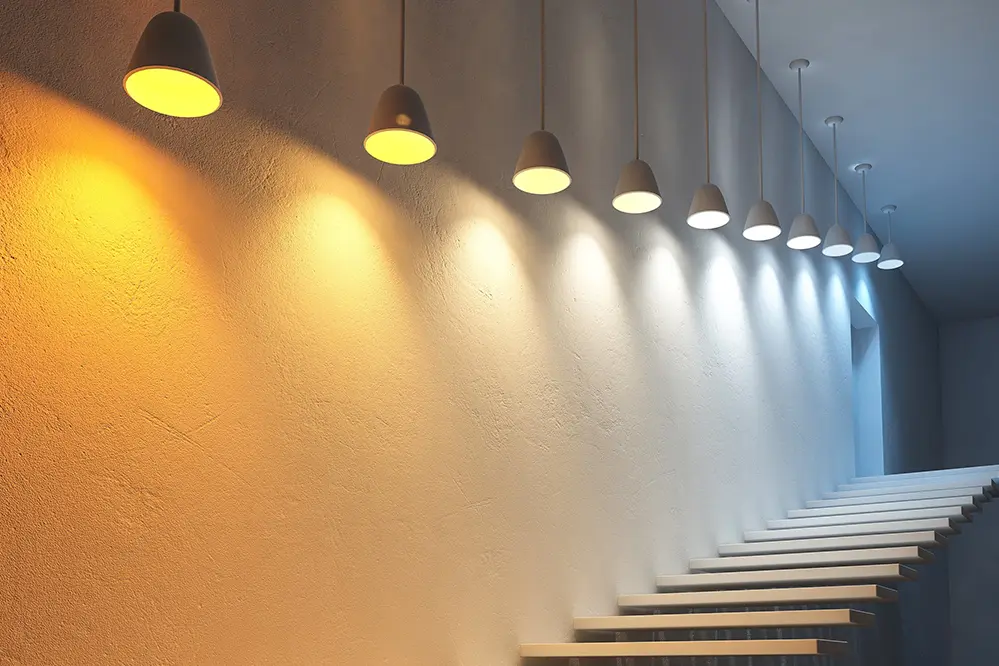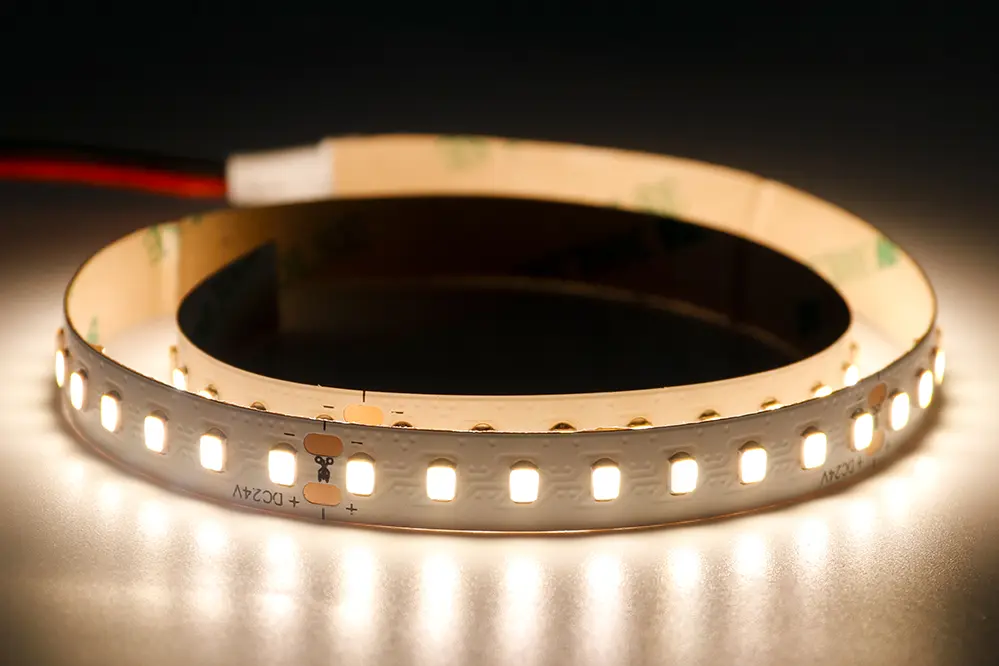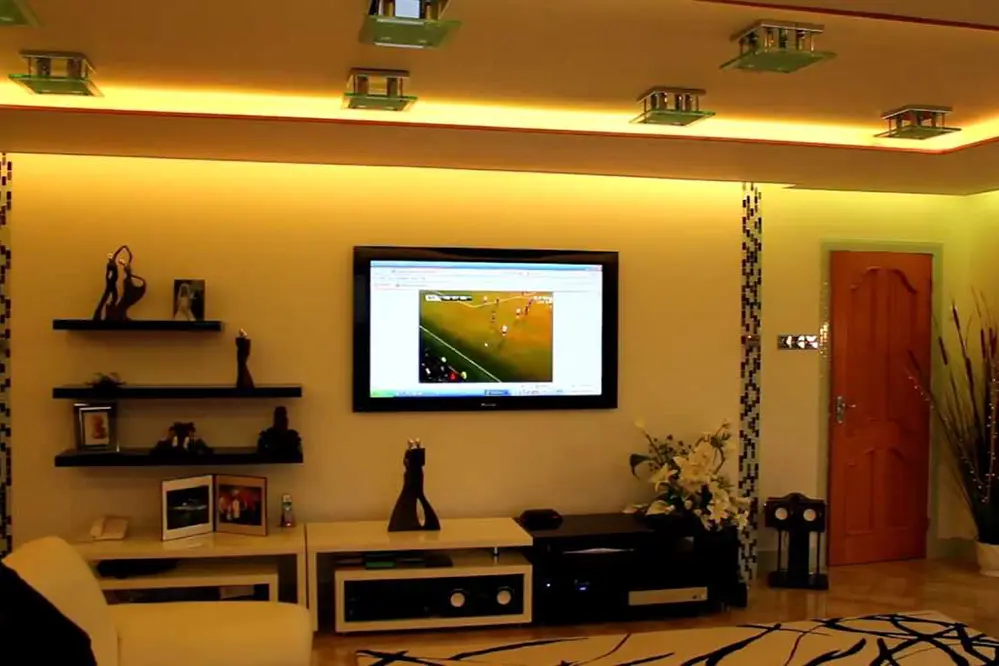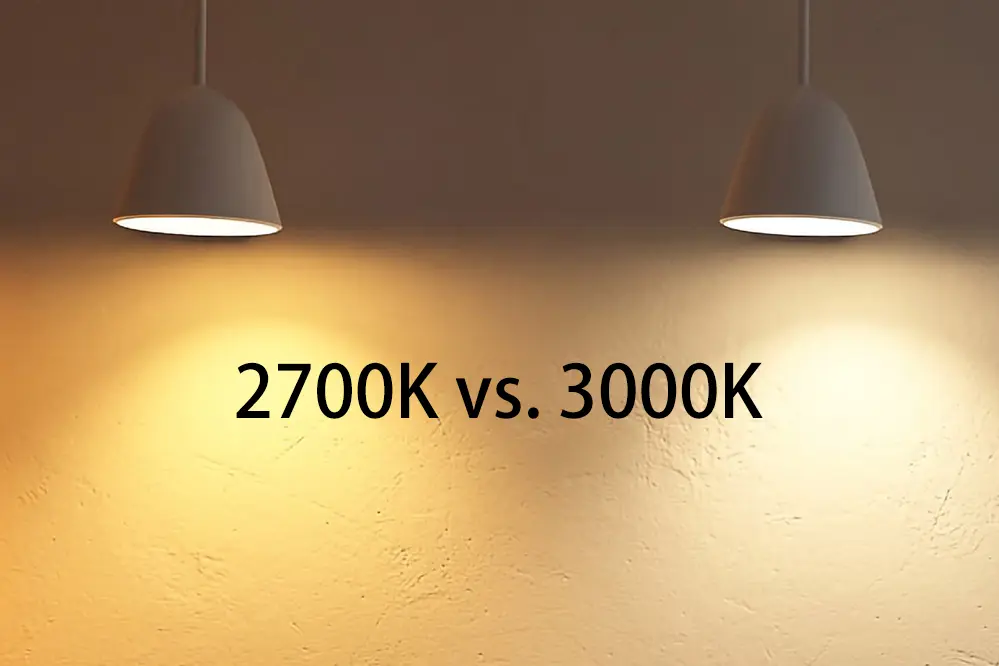Are you struggling to choose the perfect lighting for your space? Look no further! In this ultimate lighting comparison guide, we will shed light on the age-old debate of 2700k vs 3000k LEDs. Whether you’re a lighting enthusiast or a professional in the industry, this comprehensive guide will help you make an informed decision and create the perfect ambiance for any setting.
When it comes to lighting, color temperature plays a crucial role in setting the mood and atmosphere. The battle between 2700k and 3000k LEDs has left many scratching their heads. But fear not, as we unravel the mysteries behind these two popular options. We will explore their differences, advantages, and applications, allowing you to choose the ideal lighting color for your needs.
Now, let me introduce myself. I’m Tom, and I’ve been immersed in the LED lighting industry since 2005. Over the years, I’ve gained extensive knowledge and expertise in LED technology, making me your go-to source for all things lighting-related. With a passion for helping others make informed decisions, I’ve meticulously crafted this blog post to provide you with valuable insights and guidance.
So, are you ready to embark on a journey through the fascinating world of lighting? Let’s dive right in! Discover the nuances between 2700k and 3000k LEDs, and unlock the secrets to creating the perfect ambiance for your home, office, or any other space. Get ready to make an enlightened choice that will transform your environment into a captivating oasis of light and warmth.
Understanding Color Temperature

Color temperature, measured in degrees Kelvin (K), conveys the hue of a light source by comparing it to the color of an ideal black-body radiator at a specific temperature. The lower the Kelvin rating, the warmer and more yellow/red the light appears.
At 2700K, we encounter a glow reminiscent of incandescent lamps – a cozy, amber light that evokes an intimate and relaxed atmosphere. It’s the quintessence of what is considered ‘soft white’ in residential environments and conducive for lounging or unwinding at the end of the day.
Moving slightly higher, 3000K offers a ‘warm white’ that’s cleaner and a touch more neutral, suitable for settings where subtle sharpness and clarity are needed without straying too far from the warm spectrum.
Measuring Warmth in Kelvin
The Kelvin scale quantifies color temperature, delineating how light renders hues when compared to a theoretical black body at equivalent temperature. Lower Kelvin values signify a warmer, more yellowish tint in illumination.
Ascending the Kelvin ladder, we encounter distinct warm light nuances. At 2700K, there’s an amber softness, akin to the traditional incandescent bulb’s glow which enriches living spaces with a sense of tranquility and warmth.
A 3000K LED perfectly balances coziness with crisp vibrancy, making it versatile for various settings.
Beyond strictly aesthetic considerations, the choice between 2700K and 3000K influences psychological comfort as well. While both exude warmth, 2700K offers a soothing amber ambiance (ideal for relaxation), whereas 3000K infuses a brighter warmth, enhancing task performance without sacrificing inviting tones.
Effects of 2700K and 3000K Lighting
In the realm of atmospheric creation, 2700K lighting imparts a mellow radiance, imbuing environs with a homely, inviting glow reminiscent of early twilight. This temperature is often associated with residential living areas where relaxation is paramount.
Conversely, 3000K lighting strikes a more balanced beam between cozy and functional luminosity. It provides an increased level of brightness while maintaining a warm color tone, making it suitable for areas where detail-oriented tasks are frequently performed, such as kitchen workspaces or home offices. A 3000K setting harmonizes the comfort of warmth with the clarity required for concentration.
Opting for 2700K or 3000K lights affects how colors are perceived within an environment. The former tends to enhance warm hues, creating a more intimate and welcoming space, while the latter offers a true to natural daylight that can render colors in their most authentic shades, further aiding in detail recognition and visual clarity.
Selecting between these two temperature settings hinges on the intended application and ambiance desired. When a space calls for a serene and restful atmosphere, 2700K is the intuitive choice, while 3000K is commendable where functionality aligns with cozy aesthetics. This distinction underlines the importance of color temperature in shaping not only visual but also emotional responses to a given space, underscoring the pivotal role of lighting in our environments.
Applications of Warm Light

The 2700K color spectrum, akin to incandescent lighting, imbues spaces with a golden hue, creating a perception of warmth and comfort that’s ideal for living rooms and bedrooms. This warmth is conducive to relaxation and can encourage a welcoming atmosphere where calm and serenity are desired.
In domestic settings, the application of 2700K lighting can enrich the appearance of wood grains and textiles, showcasing their natural beauty and depth. Similarly, in hospitality environments such as restaurants and hotels, this warm light can contribute to creating an inviting and intimate ambiance that enhances the guest experience.
Choosing 3000K lighting, often referred to as ‘warm white,’ is particularly fitting for areas that benefit from a slightly crisper form of warm light, such as art galleries and retail spaces, where color fidelity and subtle contrast are paramount.
Best Uses for 2700K Lighting
Illuminance that mimics the golden hour.
The 2700K color temperature light renders a soft, warm ambiance that is soothing and inviting. The golden glow it emits is redolent of early morning or late afternoon sunlight, offering a tranquil environment to unwind. Used strategically, it can juxtapose spaces designed for productivity with areas meant for relaxation. It delicately balances brightness with comforting warmth, making it a premier choice for residential lighting.
Ideal for cozy evenings and gentle mornings.
When creating a restful bedroom sanctuary or a living room filled with plush textures, 2700K lighting serves excellently. It harmonizes with the circadian rhythms, signaling relaxation and preparing the body for sleep. It’s the luminescent equivalent of a comforting embrace, essential for evening wind-downs and calming the mind.
Enhances earth tones and creates depth.
In spaces where deep, rich colors and textures abound, 2700K lighting brings out the vibrancy and warmth in materials like wood and leather. This temperature complements natural finishes, making it an ideal choice for areas where the interplay of shadow and light accentuates architectural details and decor.
It softens hues with a golden touch.
Where the design intention is to create an intimate and subdued atmosphere, the 2700K lighting choice excels. This softer, warmer light temperature adds a subtle richness to colors, promoting feelings of comfort and tranquility. Such environments encourage relaxation, making this color temperature a staple in hospitality settings and tranquil living areas.
Ideal Settings for 3000K Illumination
In modern kitchen designs, where aesthetics meet function, the 3000K color temperature excels, accentuating clean lines and crisp, neutral palettes. It is the preferred option for culinary spaces that demand clarity without sacrificing warmth.
Elevates contemporary living spaces with a sophisticated glow.
The bright yet warm nature of 3000K LED lights enhances the ambiance in living rooms and open-plan areas, striking a balance that encourages interaction and activity. It’s a perfect match for settings that require a blend of welcoming warmth, yet need clear, accurate lighting for reading and socializing.
Bathrooms benefit from 3000K lighting, where tasks like grooming necessitate precision without introducing the starkness of cooler temperatures. The warmth promotes a feeling of comfort, bridging the gap between the invigorating morning routine and the relaxed evening unwind.
Art galleries and retail spaces often employ 3000K lighting to evoke a clean, inviting environment that accurately renders colors without the clinical feel of higher temperatures. While less warm than 2700K, it is ubiquitous in spaces that hinge on visual acuity and aesthetic presentation—settings where the lighting should not distract but instead complement the items on display.
Aesthetics and Mood Influence

Choosing between 2700K and 3000K LED lights is not merely a technical decision; it is fundamentally about crafting the desired ambiance within a space. The 2700K spectrum, with its soft white glow, is reminiscent of the golden hour, imparting a tranquil and cozy atmosphere that is conducive to relaxation and intimate gatherings. This warmth flatters earthy and rich color palettes, synergizing with wood tones and traditional decor to evoke a timeless elegance. However, 3000K, with its slightly crisper warm white light, has the unique ability to infuse spaces with a livelier aura, perfect for stimulating focus and clarity without compromising the innate welcoming nature of warm light. The choice hinges on the intended mood and atmosphere, subtly shaped by these nuanced differences in light temperature.
2700K for Cozy Ambiance
The 2700K color temperature exudes a warm, amber-like glow, akin to traditional incandescent bulbs, enveloping spaces in a cozy ambiance.
- Ideal for living rooms or bedrooms where comfort is paramount
- Enhances warm color schemes and complements organic materials
- Perfect for creating a relaxing, intimate setting
In spaces where a sense of calm and tranquility is desired, 2700K lighting can be the foundation of a serene environment.
Its warm illumination is particularly flattering for spaces designed for rest or leisure, promoting relaxation and comfort.
3000K for Crisper Warmth
3000K LED lights emit a light that, while still warm, is slightly cooler than 2700K.
With a marginally higher color temperature, 3000K LED lights provide a crisper version of warm light. This type of illumination is excellent for areas where detail-oriented tasks are performed, as it offers a balance between the cozy warmth of 2700K and the starkness of cooler temperatures. The subtle clarity it brings can improve visual acuity without the harshness that commonly accompanies higher color temperatures.
Often, 3000K is preferred in kitchens and bathrooms where a clear, yet inviting light is beneficial. This color temperature enhances the appearance of crisp whites and vibrant colors, making it ideal for spaces where nuances in hue play a significant role in interior design.
For those who desire a warm tone with added visual clarity, 3000K LED lights present a viable solution. A judicious use of this temperature can elevate both aesthetics and functionality in a space. Meticulously chosen 3000K fixtures can offer a welcoming atmosphere while providing light conducive to activities such as cooking, reading, or applying makeup, merging coziness with precision.
Making the Right Choice
In choosing between 2700K and 3000K LED lights, one must consider the intended ambiance and functionality of the space. The cozier, amber-like glow of 2700K is reminiscent of traditional incandescent bulbs, setting a relaxed mood that’s particularly suited for living areas where comfort is paramount.
Conversely, the crisper illumination of 3000K provides a slightly cooler and more energetic character, beneficial in spaces where distinction and detail are key. It is important to assess the existing elements like paint colors, textiles, and décor, as the lighting will interact with these features, potentially altering the perceived color and atmosphere of a room.
Room Function and Desired Atmosphere
Choosing the correct LED color temperature hinges on the functionality and desired ambiance of each specific room.
- Living Spaces: 2700K offers a soothing glow, ideal for relaxation and unwinding.
- Kitchens and Bathrooms: 3000K sharpens visibility, aiding in detailed tasks.
- Home Offices: 3000K can enhance focus and reduce eye strain during work.
- Bedrooms: Depending on personal preference, 2700K creates a tranquil environment, while 3000K provides clear, calm illumination.
- Art Displays: 3000K showcases artwork with a light that resembles daylight.
2700K LEDs cast a warm, inviting light, enhancing spaces where calm and comfort are sought.
3000K LEDs, with their bright and neutral quality, are optimal where clarity and attention to detail are paramount.
Complementing Interior Colors and Decor
Consider the palette within your space.
Warm, earthy tones like deep reds, oranges, and yellows harmonize naturally with the amber-like glow of 2700K lighting. These hues can become more vibrant and cozy under such illumination, offering a comforting envelope of warmth. Conversely, colors may shift in perception under different lighting temperatures, influencing the overall aesthetic and mood in a room.
2700K enhances rich wood tones and earthy decor elements.
A more nuanced approach is imperative – pairing cooler colors, such as blues and greens, with the slightly crisper 3000K light can bring balance to a room. It helps to alleviate potential color distortion while accentuating the fresh, clean lines of modern design with its slightly brighter illumination.
Selecting a light temperature congruent with your design scheme is crucial.
The inherent warmth of 2700K can be highly complementary to spaces showcasing natural materials, antique furnishings, and traditional design elements, enveloping them in a soft, golden hug. In contrast, the neutral cast of 3000K light can modernize a space, lending well to contemporary art, metals, and cooler color palettes, making them appear truer to their intended hue.
FAQs
What exactly is 2700K?
2700K refers to a ultra warm white or soft white color temperature. Its yellowish hue recreates the cozy ambience of incandescent bulbs, making it ideal for intimate and relaxed settings. Notably, this temperature can accentuate warm colors and wooden finishes, enhancing the opulence of traditional decor.
What exactly is 3000K?
3000K refers to the color temperature of a light source, specifically in the range of warm white light. It is measured in Kelvin (K) and represents the color appearance of the light emitted by the source. A 3000K light emits a warm glow that is often associated with a cozy and inviting atmosphere. This color temperature is commonly used in residential settings, restaurants, and hospitality spaces where a warm and comfortable ambiance is desired.
Why does warm light have different temperatures?
Warm white light ranges in temperature to offer options. This diversity allows lighting designers to tailor the warmth level to complement various color schemes and design aesthetics, ensuring that the light not only provides visibility but also contributes to the desired ambience.
What applications are best for 3000K?
Areas that require clear visibility with a touch of warmth often benefit from the 3000K color temperature.
Is there a big difference between 2700K and 3000K?
- Color Temperature: 2700K and 3000K refer to the color temperatures of lighting sources, measured in Kelvin (K).
- Warm vs. Neutral: 2700K is warmer and has a slightly more yellowish tone, while 3000K is considered neutral and has a slightly cooler, whiter tone.
- Ambience and Mood: 2700K creates a cozy and intimate atmosphere, often used in residential spaces and hospitality settings, while 3000K is more commonly used in offices, retail spaces, and commercial environments.
- Task vs. Accent Lighting: 2700K is ideal for areas where relaxation or focused task lighting is desired, such as bedrooms and living rooms, while 3000K provides better visual clarity for tasks and is often used for accent lighting or work areas.
- Personal Preference: The choice between 2700K and 3000K ultimately comes down to personal preference and the desired ambiance or functionality of the space.
- Compatibility: Both color temperatures are readily available in a variety of lighting technologies, including incandescent, halogen, LED, and fluorescent.
- Dimming Capability: It’s important to note that not all lighting sources in both color temperatures may be dimmable, so it’s crucial to check the product specifications before making a purchase.
- Matching Existing Lighting: If you already have lighting fixtures installed in a particular color temperature, it’s recommended to match the color temperature when adding new lighting to ensure consistency throughout the space.
What is the difference between soft white and warm white?
Soft white and warm white are subjective terms often used to describe light colors similar to 2700K and 3000K. In essence, soft white leans towards a yellowish, cozy glow, whereas warm white can refer to a slightly brighter, more neutral light that still maintains warmth.
How do I choose between 2700K and 3000K?
When deciding between 2700K and 3000K, consider the atmosphere you want to create. For a traditional, warm, and cozy ambience, the golden hue of 2700K is superb. If seeking a crisper but still warm light for tasks or modern aesthetics, the 3000K temperature may be more suitable, retaining some warmth while providing clear illumination.
Is 2700K LED bright?
The brightness of a 2700K LED bulb can vary depending on its lumen output, but generally speaking, it produces a warm and cozy illumination suitable for ambient lighting rather than high-intensity tasks or areas that require very bright lighting.
Is 3000K too warm?
- Color Temperature: 3000K represents a warm color temperature. It produces a cozy, yellowish-white light that is generally considered warm in appearance.
- Personal Preference: Whether 3000K is too warm or not depends on personal preference. Some people prefer warmer light for creating a relaxed and comfortable ambiance, while others may prefer cooler light for a more vibrant and energetic atmosphere.
- Usage: Consider the usage of the space when choosing a color temperature. Warm lighting is often used in areas such as bedrooms, living rooms, and restaurants to create a calming and inviting atmosphere.
- Object Color Rendering: Warm light can affect the way colors appear. If accurate color representation is crucial, such as in retail or art galleries, cooler color temperatures may be preferred to ensure better color rendering.
- Matching Other Lighting: Consider the overall lighting scheme when determining if 3000K is too warm. If other light sources in the room are significantly cooler, the warm lighting may create an unbalanced or mismatched look.
- Dimming Capabilities: Lastly, take into account the dimming capabilities of the light fixtures. Warm light can be adjusted to create different moods and levels of brightness, so the ability to dim the light can help accommodate different preferences and occasions.
Can 2700K and 3000K LEDs affect sleep?
LEDs with a color temperature of 2700K and 3000K can indeed influence sleep patterns. This is because these color temperatures fall within the warm white spectrum, which mimics the color of traditional incandescent bulbs. Our bodies are naturally attuned to the color temperature of sunlight, which tends to have a cooler tone.
Exposure to warm white light in the evening or at night can interfere with the production of melatonin, a hormone that regulates sleep-wake cycles. The higher levels of blue light emitted by warmer LEDs can suppress melatonin production and disrupt our natural sleep-wake rhythm.
In contrast, cooler white light, typically around 5000K to 6500K, resembles natural daylight and can have a more stimulating effect. This is why it is recommended to use warmer light in the evening to promote relaxation and better sleep.
To optimize sleep, it is advisable to use dimmer, warmer LED lights in the evening or before bedtime. Many modern LEDs come with adjustable color temperatures, allowing you to set a warmer tone in the evening and a cooler tone during the day. This helps to maintain a more natural circadian rhythm and improve sleep quality.
Conclusion
In closing, choosing the right color temperature is crucial for creating the intended atmosphere in any space.
While both 2700K and 3000K LEDs emit warm light, subtle differences affect the mood and functionality of the room they illuminate. A 2700K offers a cozy, inviting ambiance akin to candlelight, ideal for restful areas like bedrooms and living rooms.
On the other hand, 3000K provides a slightly whiter light that sharpens visual acuity without sacrificing warmth, making it perfect for kitchens and bathrooms where tasks are performed. The decision hinges on the delicate balance between warmth and clarity the space demands.
Ultimately, whether selecting 2700K for its soft, relaxing properties or 3000K for its balanced, task-friendly illumination, it’s about matching the lighting to the room’s purpose and aesthetic. Both temperatures play pivotal roles in crafting comfortable and functional environments.
When in doubt, consider the application, consult with a design professional, or experiment with both to personally discern which color temperature best suits your space and style.
When it comes to choosing between 2700K and 3000K LEDs, understanding the differences and applications of these lighting options is crucial. To elevate your space with high-quality LED strip lights and neon strips, we recommend contacting Unitop, a professional manufacturer based in China. With their expertise and commitment to excellence, Unitop offers a wide range of LED lighting solutions that can meet your specific requirements and exceed your expectations. Don’t hesitate to reach out to Unitop today and illuminate your space with confidence and style.





